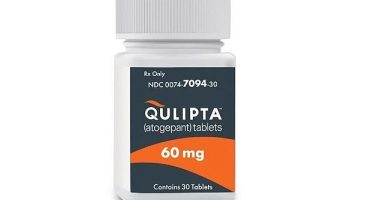As temperatures soar across the US, experts are warning of the dangers of deadly heat stroke — which can start to develop after just 10 minutes of sitting outdoors in many parts of the country.
This week, meterologists sounded the alarm as swathes of the Northeast, Midwest, and even parts of Canada are set to face a ‘dangerous’ heat wave and heat indexes over 100 degrees Fahrenheit.
Already the leading weather-related killer in the US, the heat is leading officials to warn the millions in the heatwave’s area to take the next few days’ climate ‘seriously,’ or risk becoming one of the 700 Americans who die from it each year.
This week, two tourists, including one American, were found dead in Greece amid a ‘history making’ heat wave, with temperatures topping 109 F.
Just days earlier, physician and Daily Mail columnist Dr Michael Mosley was found beside a Greek beach, having died days earlier from ‘natural causes’ while on a hike.


A woman stretches up her hand while laying in a patch of shade with a books at Yards Park, Sunday, in DC, where max heat indices will approach 105 degrees this week


Dr Michael Mosley died two and a half hours after leaving his wife Dr Claire Bailey (Pictured together) during a holiday in Greece, where temperatures have soared to 109 F


The human body has a narrow temperature window within which it can carry out vital functions, between roughly between 98°F (37°C) and 100°F (37.8°C).
Experts have told DailyMail.com that the ‘cascade of events’ leading to heat stroke start within seconds of being exposed to extreme heat — over 90°F — including sweating, fast heartbeat, and dehydration.
In just five to 10 minutes, the heat strips blood away from vital organs like the brain, leading to confusion, dizziness, and passing out.
And it takes only 15 minutes for the body to fully enter heat stroke and ‘a complete loss of body function.’
Below, DailyMail.com breaks down exactly what happens in the average person’s body from the second they step out into the blazing heat.
Within 1 minute


Sweating is a normal process meant to help the body cool down. But in extreme heats, sweating can stop, as the body can’t keep up


Being just two percent dehydrated is enough to trigger thirst. At four percent, the physical effects can be felt and the mouth becomes dry. Dehydration levels of eight to 14 percent pose a serious health risk and can cause death
As soon as you step outside, the sun beams down on exposed skin, and you’ll likely instantly begin sweating.
Sweating, or perspiration, is the body’s way of cooling itself down. As the body senses hot temperatures, the hypothalamus — the part of the brain that regulates temperature — tells glands on the skin to release sweat.
Dr Zachary Schlader, professor in the Department of Kinesiology at the Indiana University School of Public Health, told DailyMail.com: ‘This is a completely normal response. Sweating is good in this instance.’
This fluid, which is mostly made of water but contains small amounts of hydrating salt, removes heat from the body and cools it down as it evaporates on the skin.
However, humidity makes it difficult for sweat to cool us down, and staying out in extremely high temperatures results in more fluid loss than the body can keep up with.
2 minutes
In cases of extreme heat, sweat can evaporates off the skin in as little as two minutes, as the body cannot produce enough sweat to cool down the body in time.
In an effort to keep up, the body starts a process called vasodilation, in which blood vessels open up and blood flow to the skin is increased.
Dr Kristy Ziontz, chair and medical director of emergency medicine at Hackensack Meridian Bayshore Medical Center in New Jersey, told DailyMail.com: ‘The body starts to redistribute the blood from different places in an effort to cool the body.’
This may prolong sweating for a couple of extra minutes, after which perspiration typically stops.
5 to 10 minutes
‘The heart is going to start beating faster in five minutes,’ Dr Ziontz said.
This is because as blood flow is redirected to the skin, it moves away from other vital organs like the heart. Blood pressure plummets, and the heart has to pump harder.
‘And other places, like the brain, are not getting blood,’ she noted.
As blood leaves the brain to travel to the skin, someone on the road to heat stroke may experience symptoms like dizziness and confusion and may be prone to passing out.
This process of blood being pulled away from vital organs is called vasoconstriction. ‘It’s believed that this vasoconstriction is one of the triggers, that ultimately starts the cascade that could become heatstroke,’ Dr Schlader said.
Dr Ziontz also pointed to heat cramps, which occur due to the body losing too much water through sweating. ‘All in this cascade, you have salt water loss and dehydration happening at the same time,’ she said.
10 to 15 minutes


The Centers for Disease Control and Prevention warns of the dangers of heat exhaustion and heat stroke, which can be deadly
According to the CDC, 10 to 15 minutes is when heat stroke truly sets in — unless you take vital steps such as drinking water and electrolytes like sports beverages, limit direct sun exposure, and avoid strenuous activities like exercising.
Water and sports drink help replenish fluids lost from sweating, while blocking sunlight can limit sunburn, which helps body temperature climb by searing the skin.
But if you find yourself without water or a shady area, at this point, Dr Schlader noted that blood and oxygen can get pulled away from the gut, making it more permeable or vulnerable.
Toxins and bacteria that normally stay in the gut then leak out and enter the bloodstream, activating white blood cells. As the white blood cells attack the contamination, blood clots form, rapidly increasing the risk of multiple organ failure.
However, both doctors noted that this extreme reaction usually happens this quickly in severe circumstances, such as in vulnerable populations like children and elderly people.
Dr Ziontz compares the effects to a stroke, which leads to slurred speech, inability to move the limbs, numbness, vision loss, and severe headache.
30+ minutes
‘There’s a complete loss of body function,’ Dr Ziontz said. At this point, the body’s internal temperature has reached 106 F.
Dr Schlader compares the series of events to sepsis, the body’s overreaction to an infection that can lead to total organ failure.
The doctors noted that it’s difficult to determine the order in which organs shut down, but by this point, seeking emergency care is essential to reverse the damage.
Additionally, a patient may experience rhabdomyolysis, the breakdown and potential death of musles.
According to the CDC, when the muscle tissue dies, electrolytes and proteins are released into the bloodstream, causing irregular heart rhythms, seizures, and kidney damage.
Dr Jared L Ross, an emergency medicine physician in South Carolina, told DailyMail.com: ‘Additionally, the heat can cause cell membranes to break down releasing potassium into the bloodstream.’
‘High levels of potassium can interfere with electrical signals in the heart and even cause cardiac arrest and death.’
1 hour
If a person suffering heat stroke is about to get emergency care, doctors immediately start working to cool them down.
‘We work on all systems when we cool the skin,’ Dr Ziontz said. ‘Cooling blankets, we put in an IV and chill the normal saline to bring the body temperature down. We put ice packs in key areas like the armpits and the groin, which are kind of like big service centers for a large amount of blood.’
‘In the most extreme cases, we put a catheter into the bladder to cool it that way.’
Dr Ziontz estimates that it takes about a day or two of recovery time in the hospital for a patient to heal. ‘It shouldn’t be a very long hospital stay,’ she said.
Long-term effects


To prevent heat stroke, Dr Ziontz recommends staying well hydrated with water and sports drinks, especially if you’re also drinking caffeine, which has dehydrating properties
‘There really should be no permanent defects or deficits from heatstroke,’ Dr Ziontz said. ‘It should be recoverable.’
However, some recent studies have suggested that surviving heat stroke could have long-term effects.
A review published last year in the journal Open Access Emergency Medicine suggested that survivors could suffer chronic heart and kidney diseases later in life. ‘This leads to the persistent risk of death,’ the authors wrote.
Additional research has also tied heat stroke to long-term cognitive and motor impairments, even in young, otherwise healthy patients.
Cleveland Clinic also states that going through heat stroke once raises the risk of suffering it again. One study in mice from 2020 suggested this could be due to patients becoming immunocompromised.
To prevent heat stroke, Dr Ziontz recommends staying well hydrated with water and sports drinks, especially if you’re also drinking caffeine, which has dehydrating properties.
Additionally, she suggested paying close attention to medications you’re taking, as some drugs like antidepressants can prevent normal cooling processes like sweating.
‘And make sure that you are diligent about the weather predictions and plan accordingly for sun protection and shade,’ she said.
Source: Mail Online







